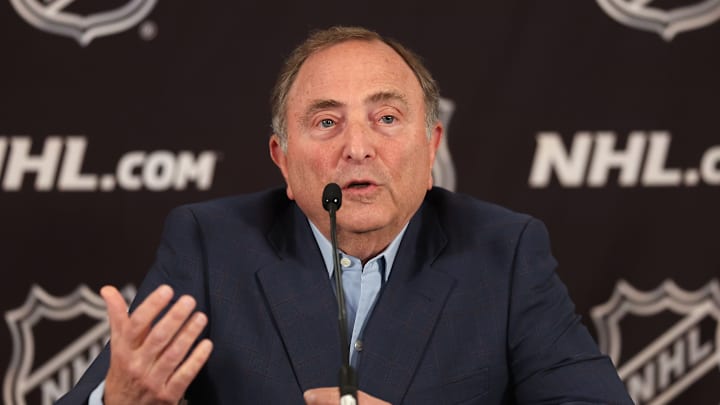The NHL and NHLPA have agreed on a new collective bargaining agreement (CBA). Doing so without an NHL lockout and court battle is a win for both parties. After reviewing the upcoming changes, it's clear that both sides worked diligently to obtain what was needed while also compromising to finalize the new CBA.
Getting a new CBA completed before the start of the 2025-26 season was crucial. By doing so, neither the NHL nor the NHLPA has to spend the entire season answering questions about whether a new CBA will be finalized in time for the 2026-27 season. It also eliminates any fears of a possible lockout. Something that both sides wanted to avoid.
Avoiding a work stoppage was crucial because the NHL is finally coming out of the salary cap crippling financial aftermath caused by the Covid-19 pandemic. At this moment in time, a work stoppage would have been counterproductive for everyone. Having a new CBA until September 2030 also means that projects like the 2028 World Cup can go ahead. Cities that want to apply for the World Cup can start doing so now.
With the new CBA announced, the NHL can move ahead with the NHL entry draft Friday night and Saturday. Teams can also proceed into the free agency period which begins on July 1st with a clearer picture of what the future in the NHL will look like.
NHL and NHLPA's new CBA highlights
Schedule
The NHL will begin having an 84-game schedule in the 2026-27 season. Preseason will be shortened to four games per team, down from six. Veterans with 100+ games can play in a maximum of two preseason games.
Contract Limits
The 2025-26 season will be the last season to use the current contract limit of eight years with a player's current team or seven years in free agency, as each is being shortened by one year. The maximum term allowed to be given will change to seven years to re-sign or six years in free agency.
Playoff Salary Cap
The salary cap loophole for using long-term injured reserve will be closed. New rules will prevent stacking a team's injured reserve savings to boost playoff rosters. This means that teams will no longer be able to use LTIR money to enhance their roster and then bring the player(s) on LTIR back once the playoffs start.
Draft Rights
The rights to drafted players are being standardized. Teams will keep the rights of all drafted players until the age of 22, even if those players move leagues such as CHL to NCAA. This should change the number of players who play in the minors until their rights with a team are finished and they become free agents.
Deferred Salaries and Playoff Bonuses
Players will no longer be allowed to accept deferred payments to lower salary cap hits. Deferred salaries will be outlawed in the new CBA. However, there will be a massive increase in playoff bonuses. The Stanley Cup playoff pool will be nearly doubled.
Player Benefits
In a huge win for players, their benefits will be expanded. Players will receive a big increase in health coverage and post-career support. Owners will now be responsible for covering payroll taxes and workers' compensation.
Emergency Backup Goaltenders (EBUG's)
The NHL has made a crucial change to the use of emergency backup goaltenders (EBUGs). Each team will now be required to carry a full-time EBUG. This ends the era of calling up Beer League goaltenders getting an NHL call-up. The Maple Leafs will no longer lose any games to a Zamboni driver.
Dress Code
The players will have more freedom in what they wear to and from the arena on game day. Teams will no longer be able to enforce dress codes on the players. Although suits have long been the norm, players will no longer feel the need to look professional in how they dress. Expect some lavish and over-the-top attire from some NHL players during the next CBA.
Salary Cap Projections
The NHL salary cap will be $95.5 million for this season. $104 million for the 2026-27 season, and $113 million for the 2027-28 season. Knowing these projected increases in the salary cap makes signing players this summer to long-term deals that much easier for general managers.
